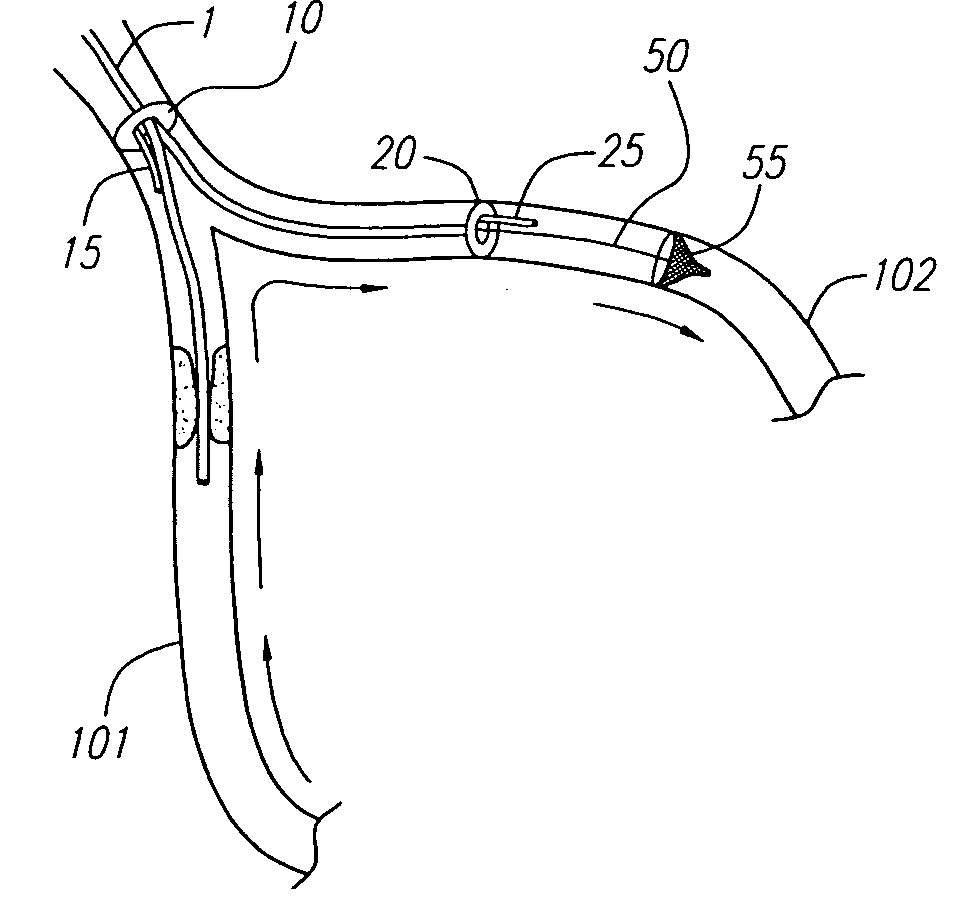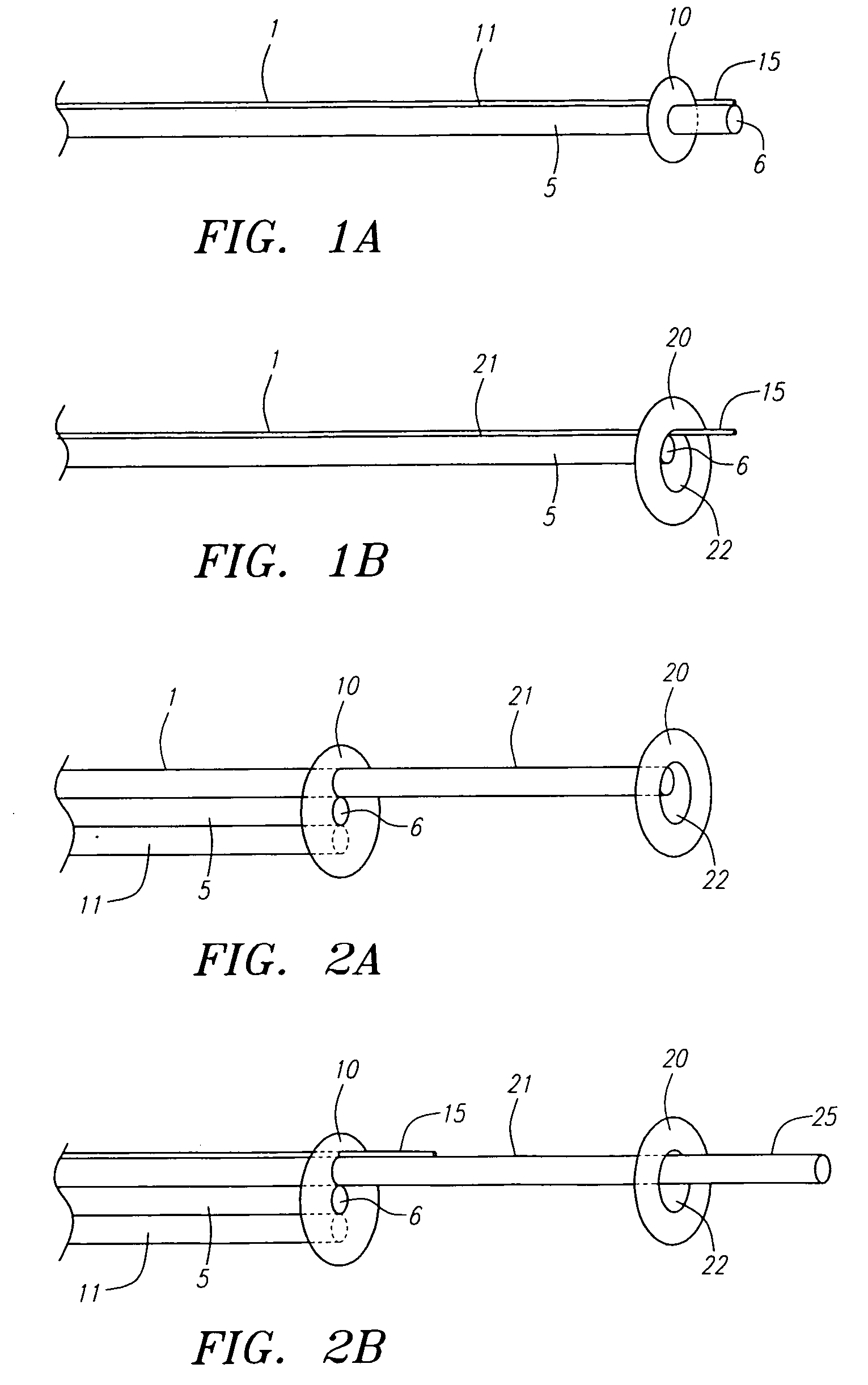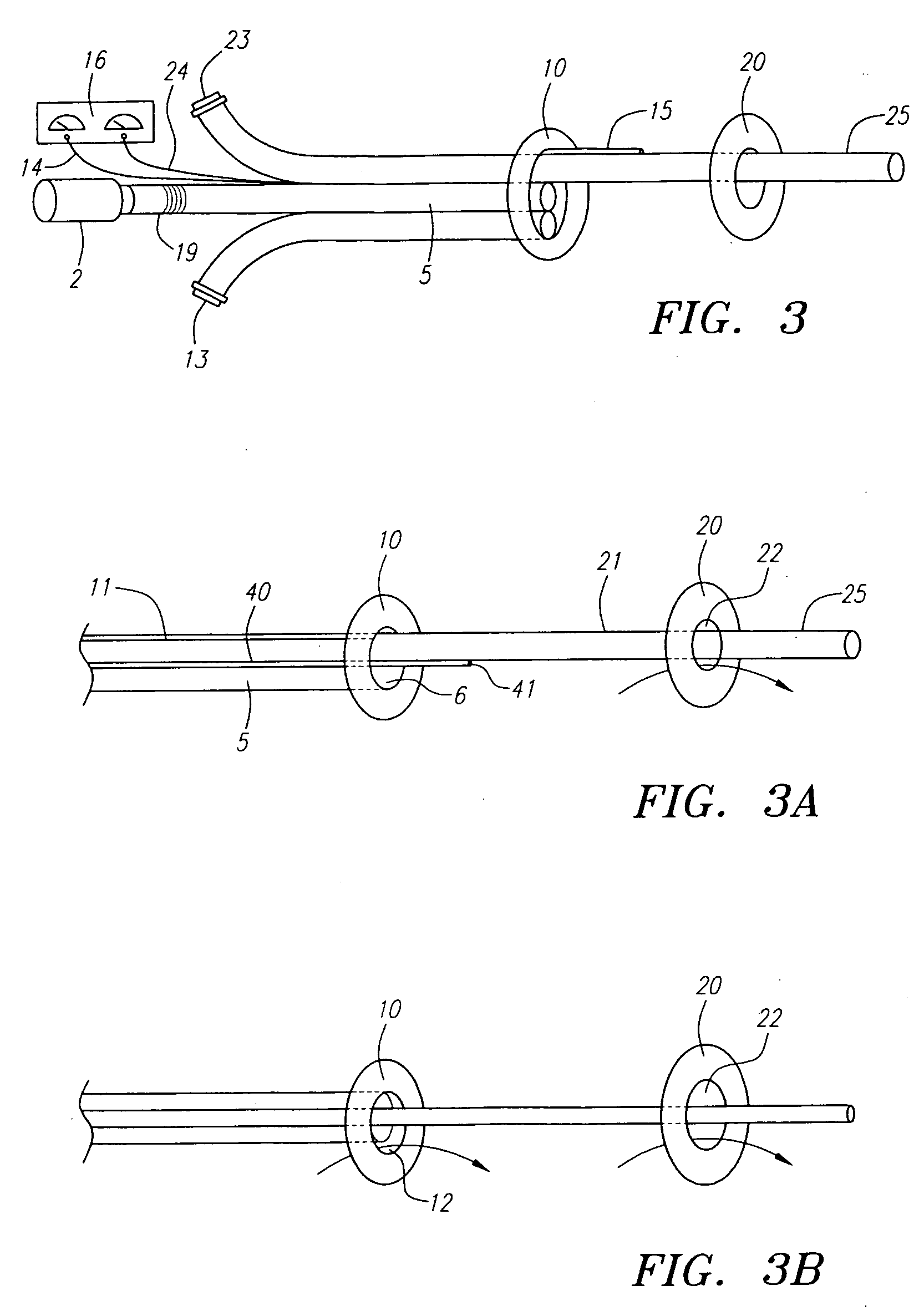Devices and methods for preventing distal embolization using flow reversal in arteries having collateral blood flow
a technology of flow reversal and distal embolization, which is applied in the field of devices and methods for preventing distal embolization using flow reversal in arteries having collateral blood flow, can solve the problems of distal embolization of vascular debris, further myocardial ischemia and infarction, and gangrene of toes and feet, so as to prevent organ ischemia and infarction and minimize embolization to the distal vessels
- Summary
- Abstract
- Description
- Claims
- Application Information
AI Technical Summary
Benefits of technology
Problems solved by technology
Method used
Image
Examples
Embodiment Construction
[0039] Balloon catheters useful for achieving flow reversal in arteries having collateral circulation were described in Barbut, U.S. Pat. No. 6,146,370, and U.S. application Ser. Nos. 09 / 792,732, filed Feb. 23, 2001; 09 / 792,600, filed Feb. 23, 2001, now U.S. Pat. No. 6,595,980; and 09 / 847,425, filed May 1, 2001, now U.S. Pat. No. 6,830,579, incorporated herein by reference in their entirety. FIG. 1A depicts one embodiment of the device for preventing distal embolization during use of vascular instrumentation. The device comprises catheter 1 and balloon occluder 10. The catheter has lumen 5 communicating with a proximal end and port 6 at a distal end. The lumen and port are adapted for introduction of therapeutic or diagnostic instruments, e.g., an atherectomy catheter, angioplasty catheter, and stent, to a carotid artery. Balloon occluder 10, communicating with inflation lumen 11, is mounted on the distal end of the catheter proximal to port 6. Manometer 15 is mounted distal to occl...
PUM
 Login to View More
Login to View More Abstract
Description
Claims
Application Information
 Login to View More
Login to View More - R&D
- Intellectual Property
- Life Sciences
- Materials
- Tech Scout
- Unparalleled Data Quality
- Higher Quality Content
- 60% Fewer Hallucinations
Browse by: Latest US Patents, China's latest patents, Technical Efficacy Thesaurus, Application Domain, Technology Topic, Popular Technical Reports.
© 2025 PatSnap. All rights reserved.Legal|Privacy policy|Modern Slavery Act Transparency Statement|Sitemap|About US| Contact US: help@patsnap.com



